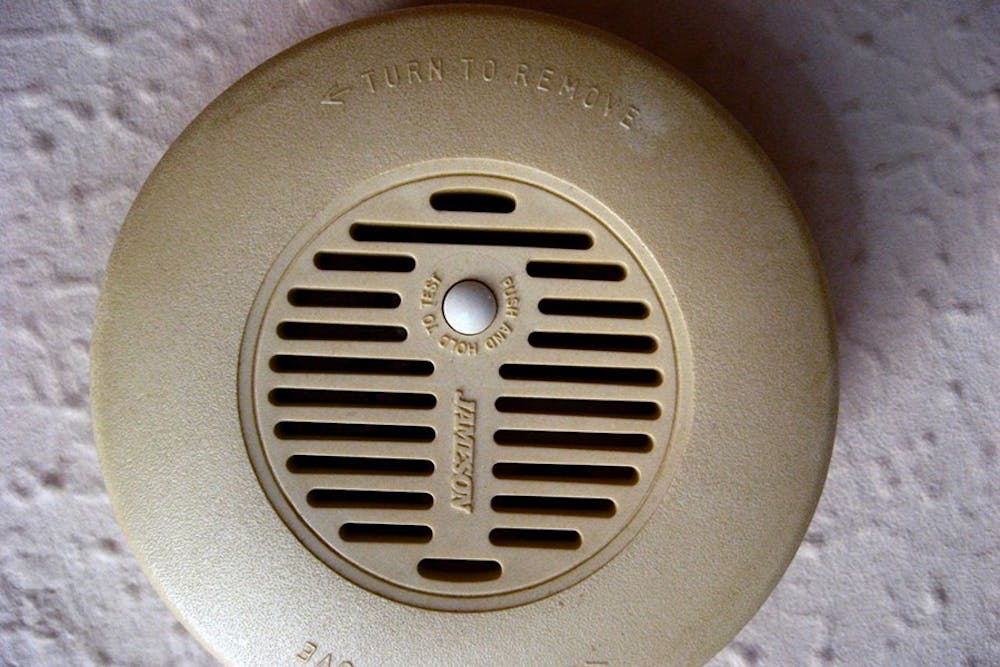Creative Commons Photo
The City of Oxford plans to require building owners to install a certain type of smoke detector in order to protect the safety of Oxford residents.
In March, Oxford City Council and City Manager Douglas Elliot felt the city was in need of an upgrade in the Oxford Property Maintenance Code in order to strengthen smoke alarm requirements. As a result, a decision was made to replace all of the previous residential smoke alarms with a safer model.
"The City of Oxford is mandating all rental properties to go from ionization type smoke alarms to photoelectric type smoke alarms," Lisa Colwell, a member of the city's Community Development Department reported.
Colwell explained there is an explicit reason for the mandated change, which stems from the difference between ionization and photoelectric type smoke detectors.
"Ionization type smoke alarms are very good at picking up particles from fast fuel-burning fires," Colwell said. "On the other hand, photoelectric type smoke alarms pick up particles from smoldering fires, which are much more common in homes."
According to Colwell, a smoldering fire is a fire that begins as an abundance of smoke before the actual fire occurs. She explained that something as small as a cigarette being set on a sofa and the resulting accumulation of smoke could cause a smoldering fire.
"These types of fires are much more common on college campuses and in residential areas, which is the reason for the change," Colwell said.
According to the city's website, the fire that destroyed the Fiji house in May 2013 was one of the major deciding factors regarding these changes. While there were no major injures or fatalities as a result of the fire, City Council agreed that proper safety measures should be taken into effect.
In addition to the Fiji fire, there was another highly publicized fire in Oxford in 2003. According to city reports, three students died in that fire.
"There were 20 ionization type smoke alarms in the house that that fire occurred," junior Casey Wood said. "None of those alarms went off and three people died."
Wood is working with fellow members of his Marketing (MKT) 325 class on a project that aims to raise awareness to students and realtors about replacing their current smoke alarms with photoelectric type alarms.
"We are working as more of an advocacy group than anything else," Wood said. "We want to use social media and other methods to teach students how to check their smoke alarms and prevent future fires."
Wood's group encourages students to take a look at the smoke alarms currently in their homes. If the alarm is labeled with a "P", it is a photoelectric type alarm and a safe choice.
Community Development Director Jung-Han Chen explained there are specific places in the home that these new smoke detectors must be installed.
"Photoelectric type smoke detectors are required to be installed outside of each sleeping area and at each level that exceeds 1,200 square feet of area," Chen said. "Any new or replacement smoke alarms installed within a sleeping room after that date must be photoelectric type detector."
According to Chen, these implementations were made effective on March 1, 2014 and all final replacements for ionization type alarms must be completed by 2017.
"In the next year and a half, we will require all property owners to implement these changes," Colwell said. "By 2017, all properties should have the photoelectric type smoke alarms."
Colwell explained the reason for the delay is a result of the financial burden these new smoke alarms will place on property owners.
However, Wood pointed out that during their research his marketing group discovered the photoelectric type smoke alarms were a mere $2 more than the ionization type alarms, leaving property owners with very little excuse for not replacing them.
Sarah Rodbro, Managing Partner at Red Brick Property said a letter was issued to their business in April with explicit dates and information regarding the switch to photoelectric type smoke alarms.
Rodbro explained that because permanent changes will not be mandated until 2017, that takes the financial burden away from property owners because they can slowly replace the current ionization type smoke alarms.
In addition to the new smoke alarm policy, the city is also requiring property owners to install carbon monoxide detectors in certain Oxford homes.
"In any residential property that has either fossil fuel burning equipment or an attached enclosed garage, a carbon monoxide detector must be installed in the immediate vicinity outside of each sleeping area," Chen said.
According to the city's website, these mandated changes are not meant to be a burden on property owners, but to prevent future fatalities and accidents from happening.
"Protecting lives has always been the highest priority for the Oxford City Council," Chen said.

